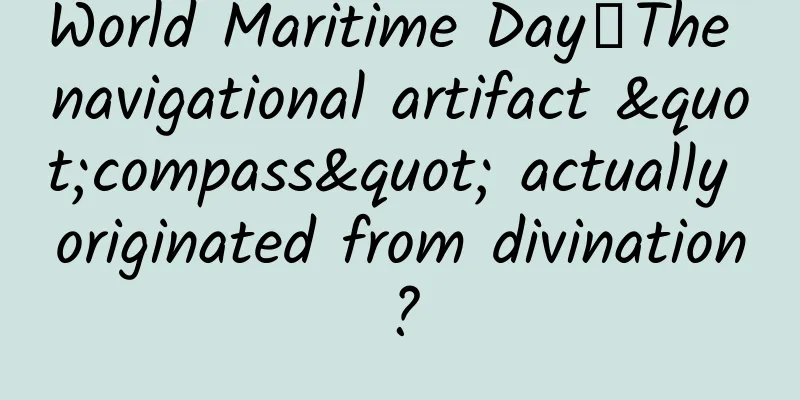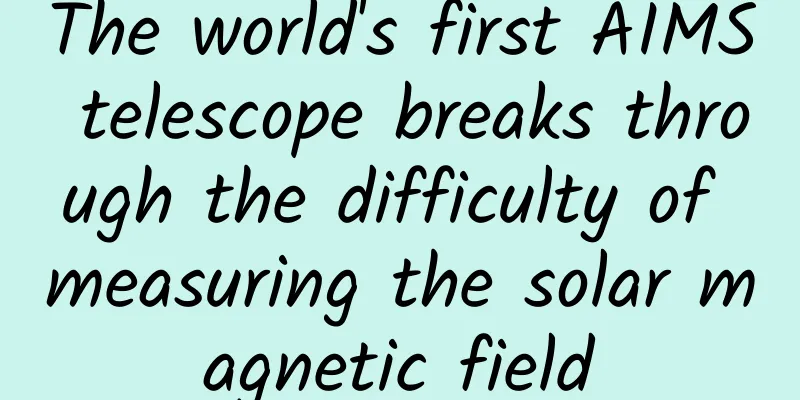World Maritime Day丨The navigational artifact "compass" actually originated from divination?

|
Sailing is a journey for people to explore the world and surpass themselves. Navigational compass in movies The Song and Yuan dynasties were the heyday of the development of the Maritime Silk Road. At least in the Northern Song Dynasty, an important navigation instrument was widely used in navigation, which was the mariner's compass. The mariner's compass was called the compass, floating needle and compass in ancient times. It consists of a needle pointing south and a hollow dial in the center. Various compasses in the China Maritime Museum The compass actually originated from divination? The nautical compass originated from the geomantic compass, which is the Feng Shui compass used for divination in the hands of Feng Shui (geography) fortune tellers. An earlier divination instrument was the divination plate. Lacquer plate from Gansu Provincial Museum From the compass to the feng shui compass The 栻盘 is composed of a round sky plate and a square ground plate, and its shape symbolizes the roundness of the sky and the squareness of the earth. In the early days, most 栻盘s were made of wood, with "maple wood for the sky and jujube heart for the ground". The sky plate and the ground plate were connected by a rotating shaft, and the sky plate rotated when in use, so it was called "rotating". From the 栻盘 unearthed from Wuwei, Gansu, Fuyang, Anhui, and the ancient tombs of Lelang, Korea, etc., the outer circle of the sky plate has twelve moon gods and twenty-eight constellations, and the inner circle is the Big Dipper in a beaded style. There are thin lines connecting the stars, and the fifth star is the rotating shaft. The handle of the dipper can rotate with the sky plate to point to various hexagrams on the ground plate for divination. Later, this type of compass was replaced by a new invention. The sky plate was changed into a compass, and the ground plate was hollowed out to allow the needle to float while retaining the shape of the hexagram. The compass then became a feng shui compass. From geomancy compass to navigation compass The hexagrams on the feng shui compass are complex and more suitable for interpretation of metaphysics and feng shui, but maritime navigation requires practicality, so after the feng shui compass was simplified, only a circle of needle positions composed of heavenly stems and earthly branches was retained to facilitate intuitive navigation. The feng shui compass evolved into a maritime compass. China Maritime Museum Collection of Geomantic Compass Navigation compass in the China Maritime Museum It can be seen from the comparison that the navigation compass adopts the simplest and most basic layout of the geomancy compass, that is, the 24-direction layout; while the geomancy compass adds many hexagram elements for geomancy needs. The 24 directions of the navigation compass are represented by the twelve earthly branches (Zi, Chou, Yin, Mao, Chen, Si, Wu, Wei, Shen, You, Xu, and Hai) and eight of the ten heavenly stems (Jia, Yi, Bing, Ding, Geng, Xin, Ren, and Gui), as well as the four dimensions of the eight trigrams (Qian, Kun, Gen, and Xun). The heavenly stems, earthly branches and the four dimensions are arranged in a balanced manner (clockwise order is Zi, Gui, Chou, Gen, Yin, Jia, Mao, Yi, Chen, Xun, Si, Bing, Wu, Ding, Wei, Kun, Shen, Geng, You, Xin, Xu, Qian, Hai, and Ren), among which Zi and Wu are due south and due north, and Mao and You are due east and due west. As for the direction indication, the direction indicated by a single word in the above 24 characters is called "single (dan) needle", with a total of 24 single needles, and each unit can be accurate to 15°; the needle position indicated by two adjacent characters is called "sewing needle", with a total of 24 sewing needles, and each unit can be accurate to 7.5°. In this way, a simple compass can indicate 48 directions. From water compass to land compass There are two types of marine compasses: water compasses and land compasses. Early marine compasses were all water compasses, which means that water is placed in the needle holder and the needle floats on the water surface to point south. This type of water compass was used in the Song, Yuan and Ming dynasties, so there is a record of "floating needle on water" in history books. According to Mr. Liu Yijie's research, marine compasses matured in the middle of the Southern Song Dynasty, when marine technicians who specialized in marine compasses appeared, namely "fire chiefs". The origin of the title of "fire chief" is related to the theory of the five elements, yin and yang, and eight trigrams in geomancy. Needle disk diagram When sailing at sea, especially when it is windy and rainy, the "fire chief" often uses a navigation compass to indicate the direction, and at the same time uses the "needle classics" that he is familiar with to assist in navigation. The Sea Route Compass Classic of the Republic of China is collected in the China Maritime Museum However, the water compass was inconvenient to use, so the floating needle in the water compass was replaced by a support needle to point south, and the dry compass appeared. After the dry compass was introduced in the Jiajing period of the Ming Dynasty, it gradually replaced the floating compass. By the Qing Dynasty, the water compass was rarely used. The nautical compass is of great significance in navigation. This is not only reflected in the fact that it can escort sea voyages, but also because it is only after it is used in navigation that the routes can be relatively fixed, the navigation area can be expanded, and many "needle classics" can be produced to assist in navigation. This is crucial to the accumulation of navigation experience and even the development of navigation technology in later generations. References| Wang Zhenduo: "Sinan Compass and Compass Plate: Discoveries and Inventions of Magnetostatics in Ancient China" (Part 1), Journal of Archaeology, No. 3, 1948 Wang Zhenduo: "Sinan Compass and Compass Plate: Discovery and Invention of Magnetostatic Knowledge in Ancient China" (Chinese), Journal of Archaeology, No. 4, 1949 Wang Zhenduo: "Sinan Compass and Compass Plate - Discovery and Invention of Magnetostatic Knowledge in Ancient China" (Part 2), "Journal of Archaeology", 1951 (no issue) Wen Renjun: "The Invention and Discovery of the Geomantic Compass in the Southern Song Dynasty", Archaeology, No. 12, 1990 Liu Yijie: "The Dialectic of "Huo Chang", Journal of Maritime History, No. 1, 2013 China Maritime Museum, compiled: "The Distant Shadows of the Sea: A Reader of Ancient Chinese Navigation Knowledge", Shanghai People's Publishing House, 2018 |
>>: It would be so cool to go to work like Wu Lei every day!
Recommend
I have summarized 9 writing styles for 100,000+ soft articles for you!
No matter how the content of a soft article chang...
This plant is called "steel in wood" and can be found in Hainan →
Polei, also known as Hainan Polei. It is also cal...
China Auto Rental has gained more young users, with revenue reaching 3.1 billion yuan in the first half of the year
On August 14, China Auto Rental released its 2018...
Xbox One and PS4 are about to become one family in China
Guided by the establishment of the Shanghai Free T...
Why is the top product on the Xiaokaxiu App store so popular (He Jiong, Jiang Xin, Xie Na, Wang Luodan, Li Xiaolu, Jia Nailiang are all playing it)...
Recently, a lip-syncing APP " Xiao Ka Xiu &q...
Smart wearables are just becoming popular, but are children's watches on the right track?
With the launch of a series of star products such...
Haier reveals a big inside story of the home appliance industry: Why China's smart manufacturing shocked the world
Since the rise of the intelligentization wave, th...
Can't understand the blood test results? Just grasp these four core items
When you go to the hospital for a cold or fever, ...
Postpartum recovery course
Introduction to postpartum recovery course resourc...
The little things you ignore on the road cause more than 8,000 deaths every year
An eMule is indispensable on the road to success ...
Bird Lover Week is here! Why do these beautiful birds love this place?
Birds are an important part of the ecosystem. Eff...
Feeding groundhogs has become a trend, but experts warn against it! This cute groundhog is the source of the Black Death
The Ningxia Hui Autonomous Region Health Commissi...
[Smart Farmers] Small insects, big harm - Bemisia tabaci
Alien species invasion is a global ecological pro...
Huawei Mate 20 Pro removed from Android Q list, no hope for update?
On May 23, according to Phone Arena, Google quiet...
"Room temperature superconductivity" is all over the news again! What is it? How will it revolutionize the world? Read it in one article
At the end of last month, a South Korean research...









